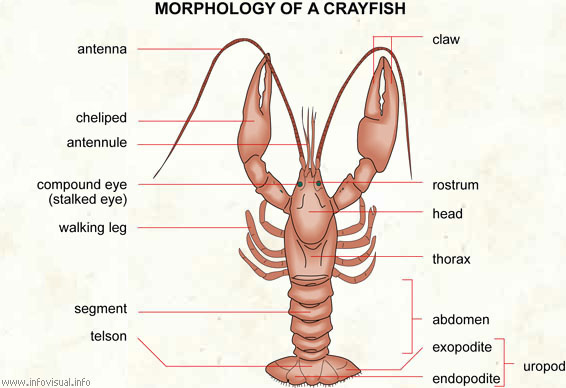 Can you imagine a cloned army of invaders? It may sound like something straight out of science fiction, yet it is true in the world of the marbled crayfish.
Can you imagine a cloned army of invaders? It may sound like something straight out of science fiction, yet it is true in the world of the marbled crayfish.
These crayfish have been spreading wildly through Europe, Japan, and Madagascar.
A recent genome study has concluded that these fish have all descended from slough crayfish native to Florida, and are genetically almost identical!
An Aquarium Accident
Generally, crayfish are freshwater crustaceans that look like baby lobsters. They are indeed related to lobsters as well as crabs and shrimps.
The marbled crayfish, called marmorkrebs in German, was first reported by a German aquarium hobbyist in 1995. He supposedly bought a slough crayfish for his home aquarium. After a while, he discovered the crayfish had produced babies on its own. Unable to care for all of the baby marmorkrebs, he took them to pet stores where other hobbyists bought them.
These new marmorkrebs were also able to reproduce on their own. Since then, marmorkrebs have been multiplying quickly - an owner could start with a single one and have a couple hundred within a year! Marmorkrebs have also been flourishing in the wild, most likely due to desperate owners dumping them in local lakes or streams.
How Did Marbled Crayfish Evolve?

Slough crayfish reproduce by mating between a male and a female. But how are marmorkrebs able to reproduce on their own?
In typical male and female reproduction, each parent provides one set of chromosomes, such that the combination of the sperm and the egg (known as fertilization) will yield an offspring (baby) with two sets of chromosomes. In animals that reproduce from eggs without fertilization (known as parthenogenic animals), the females do not get rid of one set of chromosomes in their eggs. They retain both, such that they can produce offspring that are genetically clones of themselves.
Through the genome study, scientists discovered that marmorkrebs have three sets of chromosomes! This could have happened when a female produced a mutant egg that retained both sets of chromosomes instead of just one. So when the egg was fertilized by male sperm, a third set was added. The female offspring from this mating started producing eggs that contain three sets of chromosomes, and thus was able to clone itself.
Scientists tested the genome of marmorkrebs from different parts of Germany, Madagascar, and the United States. They are all virtually identical, proving that they descended from a single mutant female!
Effect of Marbled Crayfish
Ecological studies show that marmorkrebs have been multiplying rapidly in the wild in a variety of environments. In Madagascar, their range has expanded from 1,000 square kilometers to 100,000 square kilometers in just 10 years.
Marmorkrebs are considered an invasive species because they adapt quickly to new environments and can take over new areas rapidly since they are constantly reproducing. Scientists are concerned they will squeeze out native crayfish species. In the European Union, they have been banned the sale of crayfish in the hope of preserving local species.
Sources: NYTimes, ARStechnica, NatGeo, Nature.com, Wikipedia








